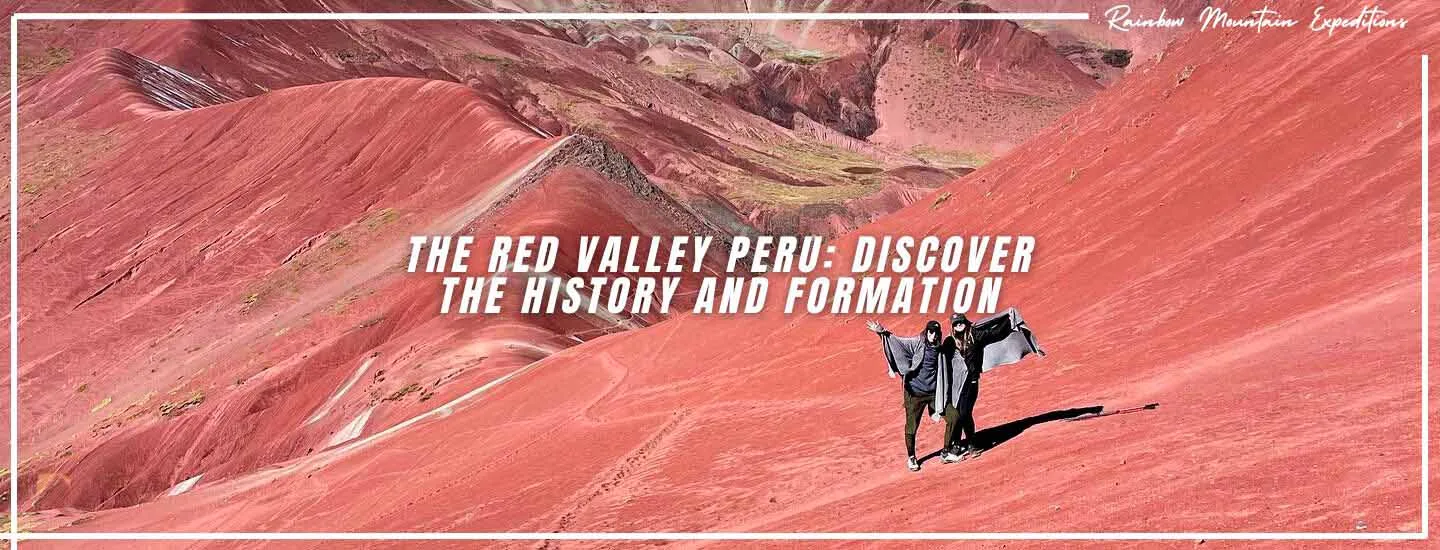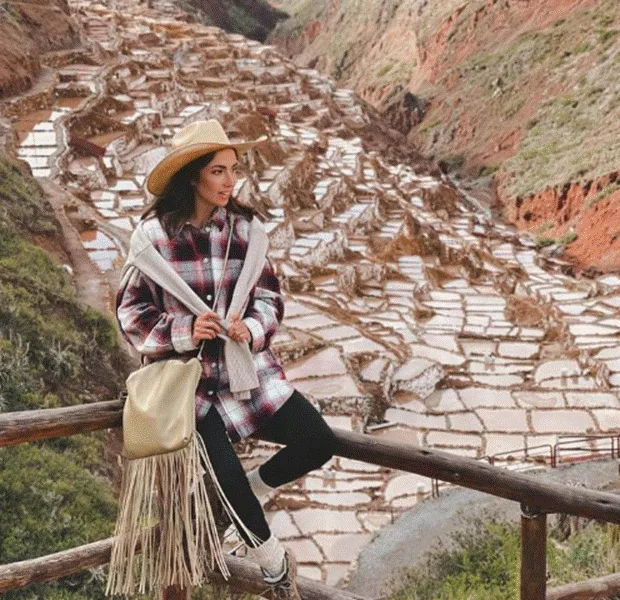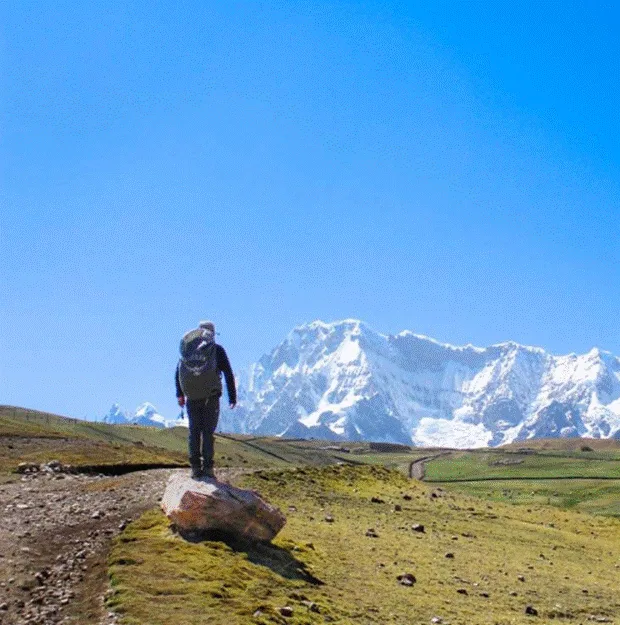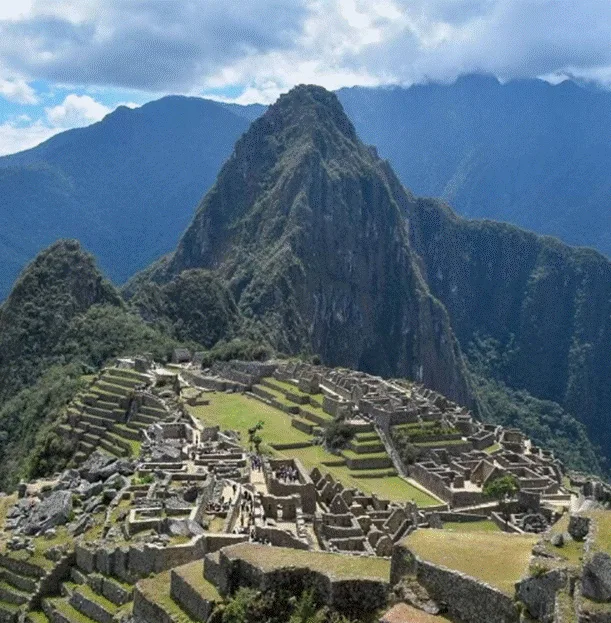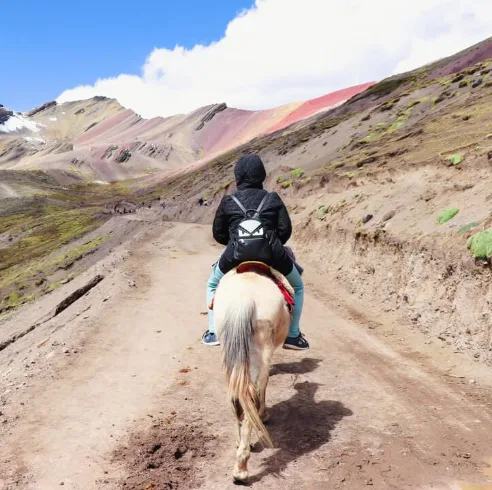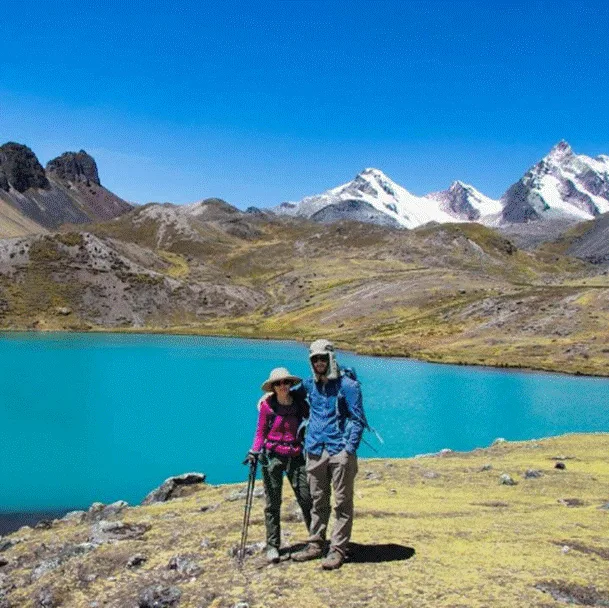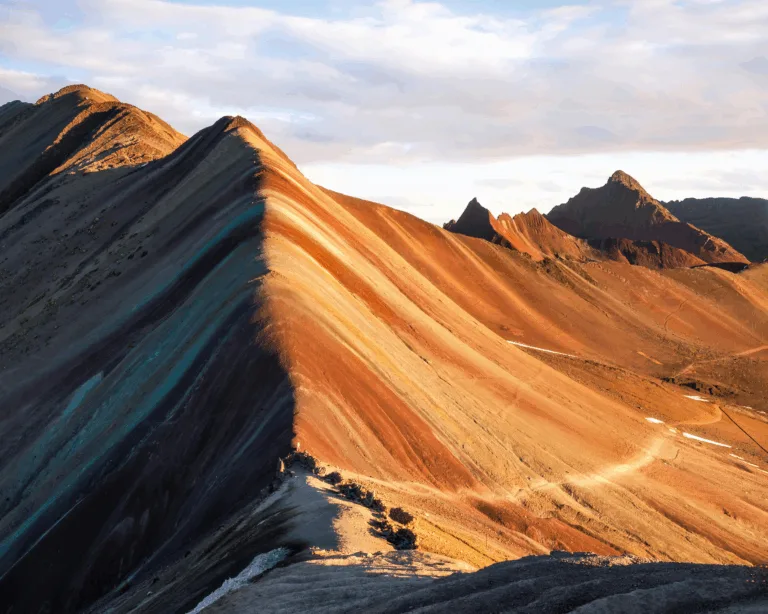How Was The Red Valley Formed?
Far beyond the bustling trails of Rainbow Mountain lies a treasure few take the time to uncover: the Red Valley. Known locally as Valle Rojo, this sprawling expanse of crimson-hued landscapes feels like stepping onto another planet. While its striking beauty leaves an indelible impression, few visitors know the incredible story behind its formation or the seasonal marvel of the Red River (Río Rojo) that courses through its heart. Here’s an in-depth look at how the Red Valley came to be—and why it’s an unmissable destination.
The Geological Birth
To understand the Red Valley’s iconic appearance, you have to go back over 40 million years. During this time, the Andes were just beginning to rise, spurred by the collision of tectonic plates. Sediments that had settled at the bottom of ancient lakes and seas were lifted skyward as mountains formed. These sedimentary layers, rich in iron and other minerals, were gradually exposed to oxygen, setting off the natural process of oxidation. The resulting “rusting” effect of the iron infused the soil with its striking red tones, creating the dramatic vistas we see today. Unlike the Rainbow Mountain, whose multi-colored layers are formed from a variety of minerals like sulfur and carbonate, the Valley is dominated by iron oxide, giving it a more uniform, fiery palette.

- Further sculpted by wind, water, and glacial movements, the landscape became a complex array of rolling hills, jagged cliffs, and ridgelines that extend as far as the eye can see.
A Closer Look at the Red River
If the Red Valley feels like it belongs on Mars, the Red River makes it look like water is flowing straight out of the planet’s core. Found within the valley, this seasonal phenomenon is a rare spectacle caused by the perfect combination of geography and weather. During the rainy season, intense downpours loosen sediment from the valley’s iron-rich hillsides. This sediment, saturated with oxidized iron, is carried downstream, dyeing the river a brilliant shade of red. The effect is strongest immediately after rainfall, as the river surges with sediment-rich waters.
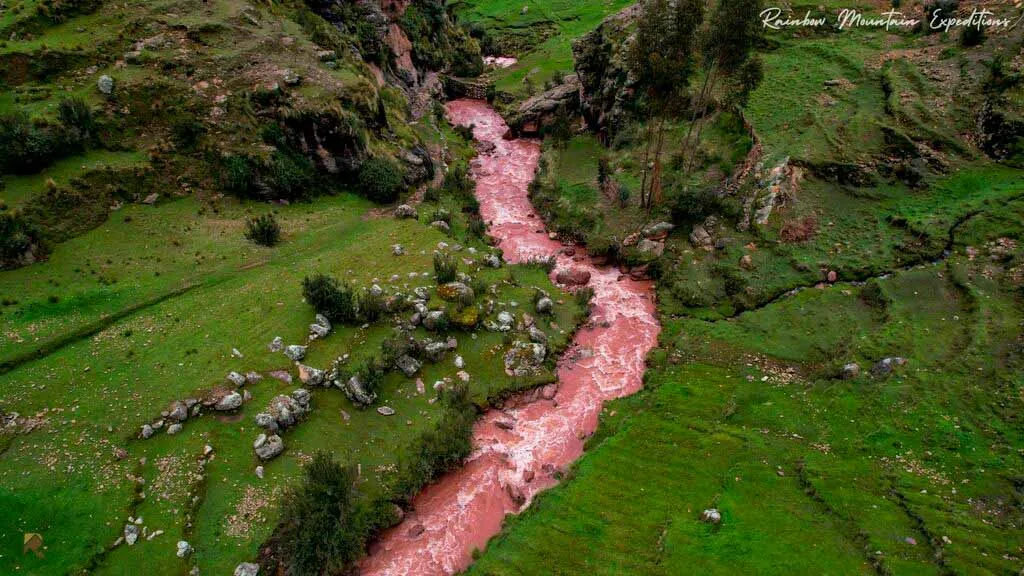
- By contrast, during the dry season, the Río Rojo diminishes significantly, with its waters appearing clear or taking on earthy tones as sediment settles to the riverbed. Seeing the river in its full crimson glory is a fleeting reward, best experienced between December and March, when rains bring the landscape to life.
What to Expect?
While Rainbow Mountain draws thousands of trekkers each week, the Valley remains a quieter, more intimate adventure. Many visitors discover it as an add-on to their Rainbow Mountain trek, though some come specifically to immerse themselves in its unique beauty.
Here’s what you can look forward to:
Unmatched Scenery: The Valley offers an uninterrupted expanse of deep reds, starkly contrasting the snow-dusted peaks of the Andes. Sunrise and sunset are particularly magical, with warm light accentuating every ridge and shadow.
- The Red River: Witnessing this vibrant waterway is a rare treat and a highlight of visiting during the rainy season.
- Tranquility and Solitude: Unlike the bustling Rainbow Mountain, the Red Valley sees far fewer visitors, making it a haven for those who prefer peaceful, uncrowded hikes.
- Wildlife Encounters: Spot herds of llamas and alpacas grazing in the high-altitude grasslands, along with native birds like Andean geese and caracaras.
Why The Red Valley Deserves a Spot on Your Bucket List
While Rainbow Mountain often steals the spotlight, the Red Valley delivers an experience that’s equally, if not more, extraordinary. It’s a place where nature showcases its raw power and artistry, from the vivid red hues of its soil to the fleeting crimson flow of the Río Rojo.
FAQ About the Red Valley and Red River
What makes the Red Valley so unique?
The Red Valley’s dramatic crimson landscapes are the result of iron oxide-rich soil that has oxidized over millions of years. Its Mars-like terrain, coupled with tranquil trails and breathtaking views.
When is the best time to visit the Red river?
- Rainy season (December to March): ideal to witness the Red River in its purest and crimson state. However, the trails can be muddy and challenging.
- Dry Season (April to November): Perfect for clear skies, stable weather, and comfortable trekking conditions, though the river may lose its color.
Is the Red Valley part of the Rainbow Mountain tour?
Yes, many tour operators offer the Red Valley as an add-on to the Rainbow Mountain trek. Some guided tours specifically focus on the Red Valley for those who want a less crowded experience.
How difficult is the trek?
The trek is moderately challenging due to the high altitude of over 5,000 meters (16,400 feet). Proper acclimatization, a good fitness level, and a steady pace are essential to enjoy the experience.
Do I need a guide to visit the Red Valley?
While the Valley can be explored independently, hiring a knowledgeable guide is highly recommended. Guides provide insights into the area’s geology, history, and culture and ensure a safer trek.
Can I visit the Red Valley if I’m not acclimated to high altitudes?
It’s strongly advised to spend at least 2–3 days in Cusco or another high-altitude location to acclimate before visiting the Red Valley. Symptoms of altitude sickness can include headache, dizziness, and fatigue, so take it slow and hydrate frequently.
How far is the Red Valley from Cusco?
The journey to the Red Valley from Cusco typically takes around 3 hours by car, followed by a trek. Many guided tours include transportation, making the trip more convenient.
Why should I visit the Red Valley instead of just Rainbow Mountain?
While Rainbow Mountain is more famous, the Valley offers a quieter, more serene experience with equally breathtaking landscapes. It also showcases different geological formations and unique features, like the seasonal Red River, making it a standout destination in its own right.
Can I visit the Red River during the dry season?
While the Red River is most vivid during the rainy season (December to March), it can still be observed in the dry season, although its color is less intense.
If you want to learn more about the Red River you can review our following articles:
- Red River in Cusco Peru: Everything You Need to Know.
- The Two Incredible Red Rivers in Cusco That You Need to Know.

